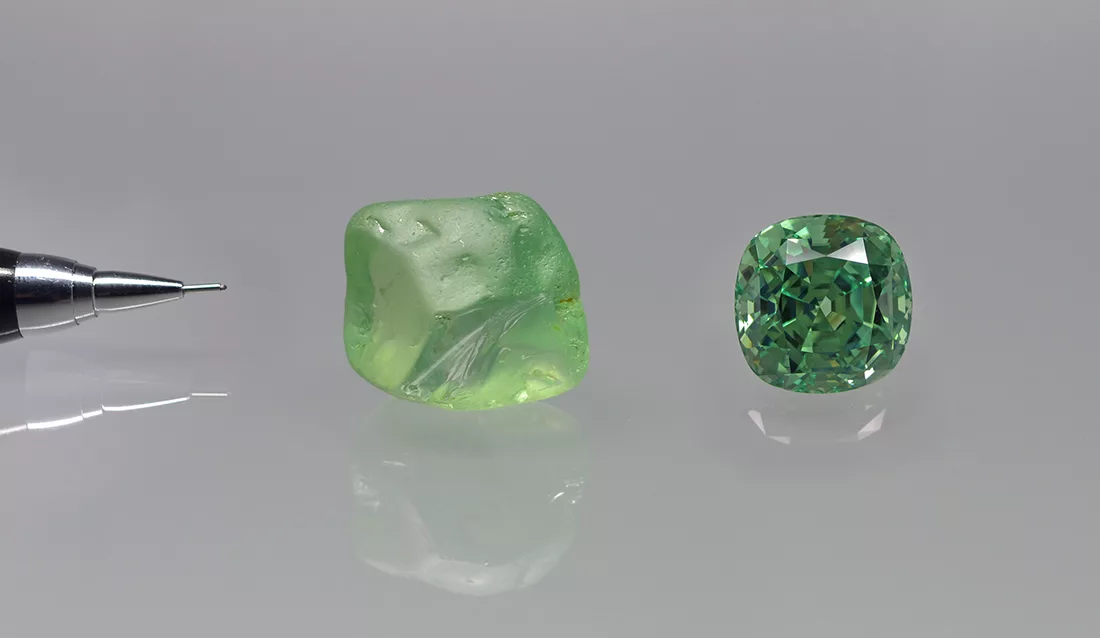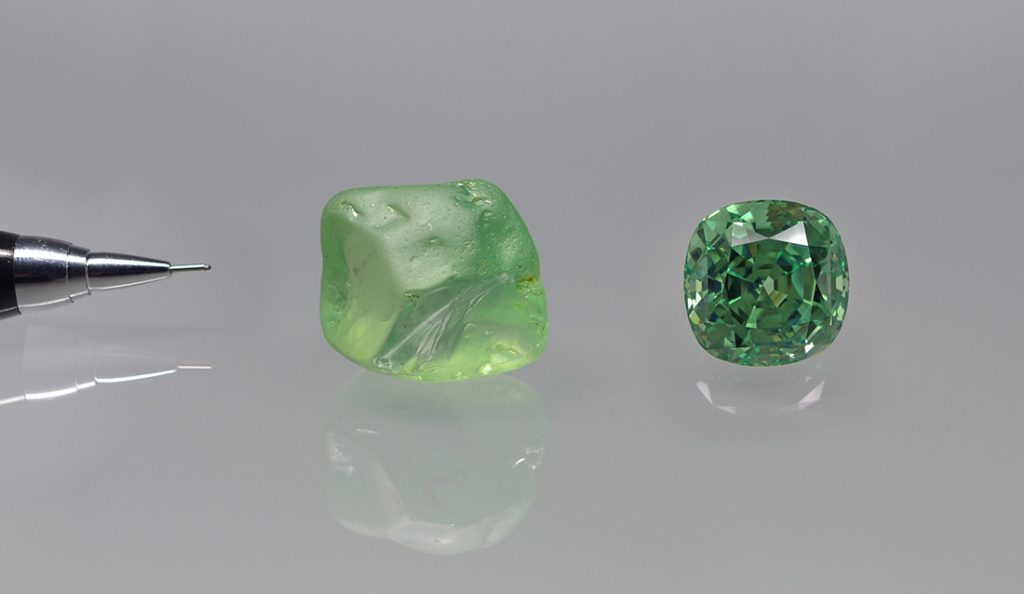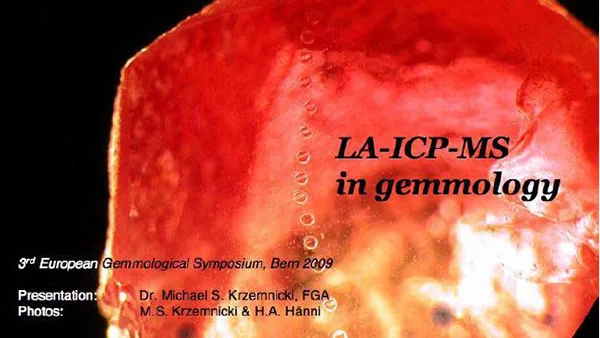
Vanadium Chrysoberyl

first published in Facette 21 (February 2014)
Vanadium-bearing chrysoberyl of light green to saturated green colour has been known in the trade since the mid-1990s. Originally first described from Tunduru in southern Tanzania (Johnson & Koivula 1996, Pfenniger 2000), similar attractive “mint green” chrysoberyls have been subsequently found in Ilakaka (Madagascar) and Sri Lanka. Recently, similar chrysoberyl have also been reported from Mogok in Myanmar (Schmetzer et al., 2013), although these are in fact historic Mogok samples that were kept in public and private collections in England since the 1970s (Schmetzer et al. 2013a). Apart from these natural gemstones, Kyocera Inc. (Japan) had introduced synthetic V-bearing chrysoberyls of green colour more or less at the same time (see also Krzemnicki & Kiefert 1999).
Recently, we analysed a number of samples in a joint research project under the lead of Dr. Karl Schmetzer and have just published our results in the latest issue of the Journal of Gemmology (Schmetzer et al. 2013b). The focus of this detailed study is the comparison of the trace element composition (mainly V3+, Cr3+, Fe3+), absorption spectra,
and internal growth structures of the samples. At SSEF, we were mainly interested in analysing the few solid inclusions within these samples, which are mainly from the H.A. Hänni gemstone collection housed as a reference collection at the SSEF. Using our Renishaw InVia Ramanscope, we analysed a number of inclusions, identified as apatite (Tunduru and Ilakaka) and calcite (Mogok). For more details about natural and synthetic vanadium-bearing chrysoberyl, we would like to refer the interested reader to this PDF publication.


